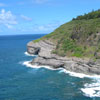Okay just wanted to hear if I screwed up. I have a couple (3) of stanly bench planes that I got off EBay that I was starting to redo. After getting halfway through lapping the sole flat on the #3 I decided there had to be an easier way. The #5 and #7 bottoms looked worse than the #3. Being that the #5 was the worse I took it to my local machine shop. For $15 they are going to take 0.003" off the bottom and it will be within 0.001 of dead flat with a nice finish. I figure that with a little hand lapping I can get it ever so smooth.
Has anybody ever gone this route before. also, should have I spent extra to have them bring the side to a absolute dead perfect ninety degrees to the base? Or is just lapping the side enough?
Like I said the #5 was pretty bad so if it is just a learning experience, so be it. I plan on having the japanning redone so I will hand lap the bottom over float glass after the baking process. Also the same plane is in need of a replacement lever cap, any good places other than Ebay that I should look. I would like one of the original type 11 with no words.
Thanks all you have been great in helping me get these things restored. Now if I can just get somebody to show me how to tune them in to make full curls.
Jimmy




 Reply With Quote
Reply With Quote
 Please help support the Creek.
Please help support the Creek.

